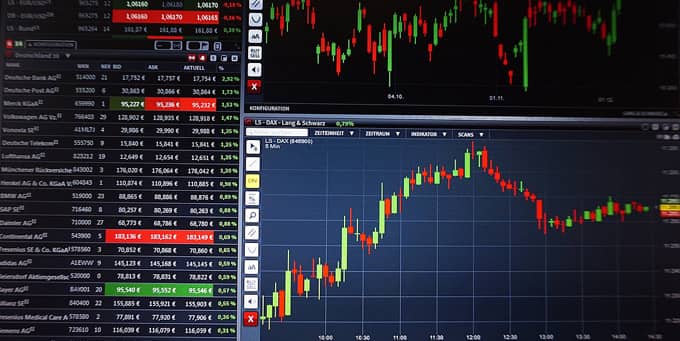
Contract for Difference (CFD) trading has emerged as a pivotal component in the realm of modern financial markets. Since its inception, CFD trading has undergone significant transformations, driven by technological advancements, regulatory changes, and evolving trader preferences. This article delves into the evolution of CFD trading, highlighting key trends and innovations that have shaped its current landscape.
Understanding CFD Trading
To comprehend the evolution of CFD trading, it’s essential to first understand what CFDs are. A Contract for Difference is a financial derivative that allows traders to speculate on the price movements of underlying assets without owning the assets themselves. These assets could be stocks, commodities, indices, or currencies. The primary allure of CFDs lies in their flexibility, leverage, and ability to profit from both rising and falling markets.
Early Days: The Birth of CFD Trading
CFDs were introduced in the early 1990s in London as an innovative way for hedge funds and institutional investors to hedge their portfolios. Initially, CFDs were primarily used for equity trading, offering a cost-effective alternative to traditional share dealing. The absence of stamp duty and the ability to leverage trades made CFDs an attractive proposition for sophisticated investors.
Technological Advancements: Online Trading Platforms
The advent of the internet and the proliferation of online trading platforms in the late 1990s and early 2000s revolutionized CFD trading. Suddenly, retail investors could access markets that were previously the domain of institutional players. Platforms such as MetaTrader and proprietary broker platforms provided user-friendly interfaces, real-time data feeds, and advanced charting tools. These technological advancements democratized CFD trading, making it accessible to a broader audience.
Regulatory Changes: Ensuring Market Integrity
As CFD trading gained popularity, regulatory bodies worldwide began to take notice. The need to protect retail investors and ensure market integrity led to the implementation of stricter regulations. For instance, the European Securities and Markets Authority (ESMA) introduced measures to curb excessive leverage and provide greater transparency. These regulations aimed to strike a balance between fostering innovation and protecting investors from undue risk.
Diversification of Assets: Beyond Equities
While CFDs initially focused on equities, the range of underlying assets has expanded significantly over the years. Today, traders can access CFDs on commodities, indices, forex, cryptocurrencies, and more. This diversification has opened up new opportunities for traders to diversify their portfolios and explore various market sectors. The inclusion of cryptocurrencies, in particular, has attracted a new wave of traders seeking exposure to the volatile and rapidly evolving digital asset market.
Leverage and Margin: Balancing Risk and Reward
Leverage has always been a defining feature of CFD trading, allowing traders to control larger positions with a relatively small amount of capital. However, leverage is a double-edged sword, amplifying both potential profits and losses. Innovations in risk management tools, such as guaranteed stop-loss orders and negative balance protection, have helped traders manage their exposure more effectively. Brokers now offer a wide range of leverage options, allowing traders to choose levels that align with their risk tolerance.
Automation and Algorithmic Trading
The rise of algorithmic trading and automation has further transformed the CFD trading landscape. Traders can now develop and deploy automated strategies that execute trades based on predefined criteria. These algorithms can analyze vast amounts of data, identify patterns, and execute trades at speeds beyond human capabilities. The integration of artificial intelligence and machine learning has enhanced the sophistication of these algorithms, enabling more accurate predictions and adaptive trading strategies.
Mobile Trading: Trading on the Go
The proliferation of smartphones and mobile apps has brought CFD trading to the fingertips of traders. Mobile trading apps offer the same functionality as desktop platforms, allowing traders to monitor markets, execute trades, and manage positions on the go. This convenience has led to an increase in trading activity, as traders can respond to market events in real-time, regardless of their location.
Social Trading: Learning from the Best
Social trading has emerged as a popular trend in the CFD trading space. Platforms like eToro allow traders to follow and copy the trades of experienced investors. This collaborative approach enables novice traders to learn from seasoned professionals while providing experienced traders with additional income streams through copy trading. Social trading fosters a sense of community and knowledge-sharing, enhancing the overall trading experience.
Conclusion: The Future of CFD Trading
The evolution of CFD trading has been marked by continuous innovation and adaptation to changing market dynamics. Technological advancements, regulatory changes, and the diversification of assets have collectively shaped the modern CFD trading landscape. As we look ahead, the future of CFD trading promises further advancements in automation, artificial intelligence, and user-centric platforms. Traders who embrace these innovations will be well-positioned to navigate the complexities of the financial markets and capitalize on emerging opportunities.
In summary, CFD trading has evolved from a niche hedging tool for institutional investors to a widely accessible and dynamic trading instrument for retail traders. The trends and innovations discussed in this article highlight the transformative journey of CFD trading, underscoring its significance in the ever-evolving world of finance.